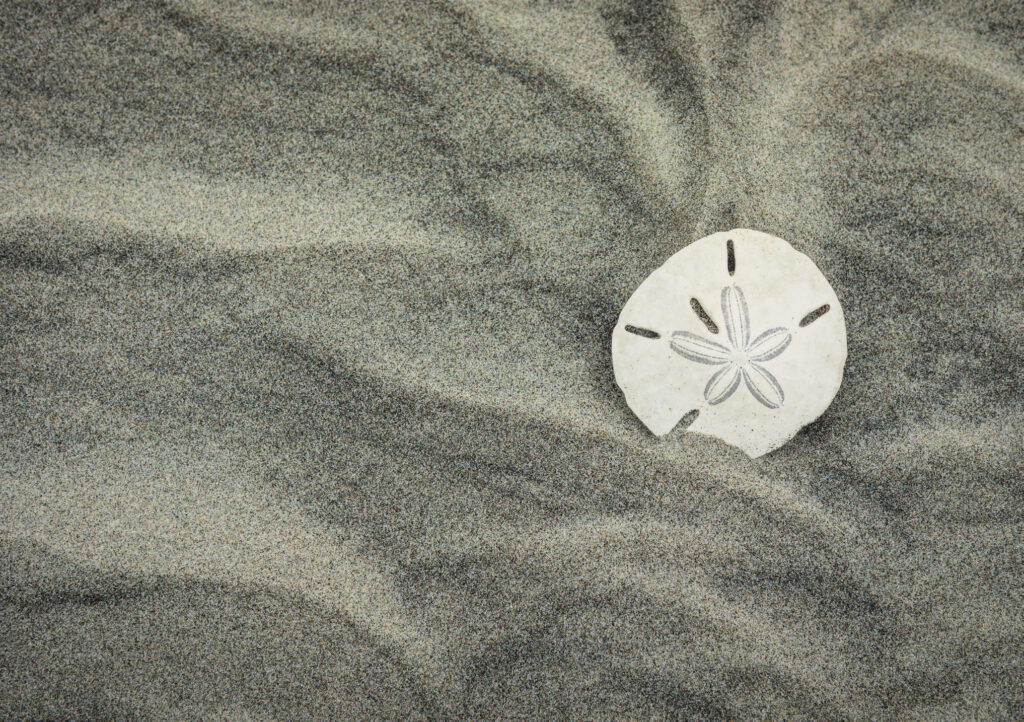“Sand Dollar on Little Tybee Island, Georgia”
by Robin Conover, Canon EOS 5D Mark IV
EF 24-70 mm at 70 mm, ƒ2.8 L USM lens
ISO 1000, ƒ10 at 125 second, handheld
Why is it that finding a sand dollar on the beach, bleached and shining white, can turn almost anyone into a kid again? It does to me, anyway. I could walk barefoot in the sand for hours, collecting shells with the hope of finding just one complete sand dollar.
On a recent trip to Tybee Island, a bitterly cold wind and rain met me in this quaint coastal town just southeast of Savannah, Georgia. Arriving after dark, I hoped the weather would clear overnight for a sunrise walk on the beach the next morning. My wishes for fairer weather conditions for the next day and the rest of the week were met with a tepid response.
Winter can be a great time to visit the beach — smaller crowds make it more peaceful and tranquil while migrating birds can bring photographic opportunities, but the weather can quickly change for the worse. This particular trip gave me a few hours each day to enjoy being outside and exploring some of the northernmost sections of Georgia’s barrier island system that stretches for some 110 miles from Tybee south to Dungeness and the Cumberland Island National Seashore.
The barrier island systems include thousands of acres of salt marsh and dunes that help protect the main coastline from erosion. The sand here is different than the powdery white sands of the Gulf Coast. It’s more granular and looks like salt and pepper. Filled with tiny grains of granite and clay, dispersed amid pulverized shells and exoskeletons, including sand dollars, the sand contains fantastic black-and-white patterns created by wind and water.
Looking for interesting places to go, my group of friends and I decided to charter a boat to take us to Little Tybee Island for a day of exploring. Though Little Tybee is about twice the size of Tybee Island, it is an undeveloped, uninhabited nature preserve that’s only accessible by boat.
Perhaps the weather and the season played a role, but we were the only people on the Little Tybee beach that day. We had to get there and return through the salt marsh before the tide went out late in the day. This gave us about three hours to roam the beach.
Relatively few birds and a heavily overcast sky left me wondering what, if any, successful photographs I might come away with from this day. Looking around, the patterns in the dunes and the sand began to fascinate me.
With few daily visitors and beachcombers in the winter months, the artifacts carried ashore by waves remain in the place longer than they would on heavily traveled beaches. Remnants of a turtle, horseshoe crabs, shells and sand dollars were strewn everywhere. Many were broken and scattered by animals and birds feeding upon them, but others remained whole.
Each artifact seemed to form an anchor around which the sand then shifted and eroded. As I photographed this specimen, I wondered just how long it had stood up against the dune, untouched and unseen, before I had the opportunity to photograph it.



